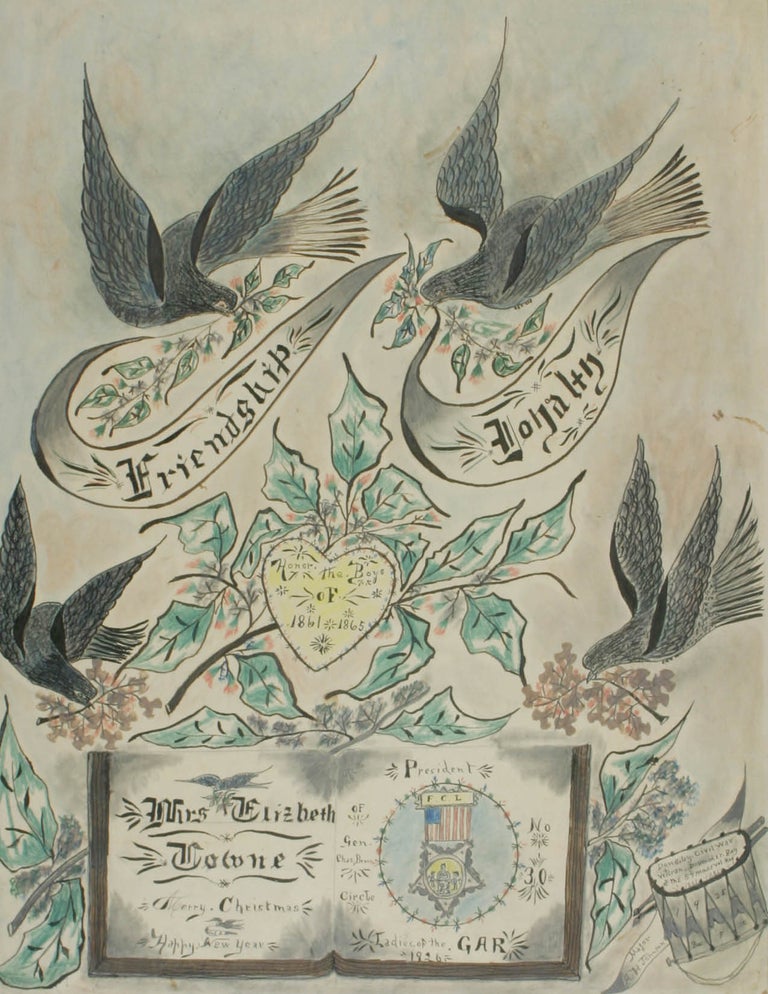
Folk Art Memorial Drawing to the 54th Massachusetts Infantry, Presented to the Ladies of the G.A.R.
Massachusetts: 1926. Ink on paper, 18 ½ x 23 ½ inches. Excellent. Item #List302
Alexander Johnson, an African-American musician from New Bedford, enlisted in the army at age 16 and was believed for some time to be the first African-American musician in the Union Army. He mustered into mustered into Company "C" of the Massachusetts 54th Infantry under Colonel Shaw. The 54th Massachusetts was the second African-American regiment in the Union army, formed only after the 1st Kansas Colored Volunteer Infantry. New Bedford had a large population of escaped slaves, and African-Americans from the city enrolled heavily. Johnson had been orphaned at a young age and his adopted father, William Henry Johnson, strongly advocated for African-American enrollment in the Union army, a factor which most likely played a part in the young Alex’s enrollment at age sixteen.
Johnson served in the 54th for the duration of the war, including the bloody charge of Fort Wagner on Morris Island on July 18, 1863. The 54th lost 272 of its 600 men on that day, including Colonel Shaw. Johnson’s musical acumen was widely acknowledged and he became known - erroneously, it would later turn out - as being the first African-American musician in the Union army. After the conflict ended Johnson settled in Worcester, organizing a band called “Johnson’s Drum Corps” and instructing young musicians.
Augustus St. Gaudens famously erected a monument to the 54th at the Massachusetts state house. Johnson visited the monument at a G.A.R. event in 1904, and noted to others in attendance the similarity between his own likeness and that of the drummer boy in St. Gaudens monument. This proved to be pure coincidence, as St. Gaudens had based his work on models, but the idea persists to this day that Johnson is the drummer boy pictured.
Johnson painted this memorial to the Ladies of the G.A.R. in 1926 at age seventy-nine, four years before his death. The painting shows two birds with banners reading "Friendship" and "Loyalty" over a heart reading "Honor the Boys / of / 1861-1865," with a book open to pages reading "Mrs Elizabeth / Towne / Merry Christmas / and A / Happy New Year," and "President / Of / Gen. / Chas. Deven / Circle / No / 30 / Ladies of the GAR / 1926." Most of his comrades-in-arms were likely dead at this point, and we find no record of Elizabeth Towne. A wonderful folk art memorial to the 54th Massachusetts, well preserved and attractive in very good condition overall with light normal wear.
References: Coddington, Ronald. Colonel Shaw’s Drummer Boy. New York Times, March 5, 2013.
Price: $5,000.00


